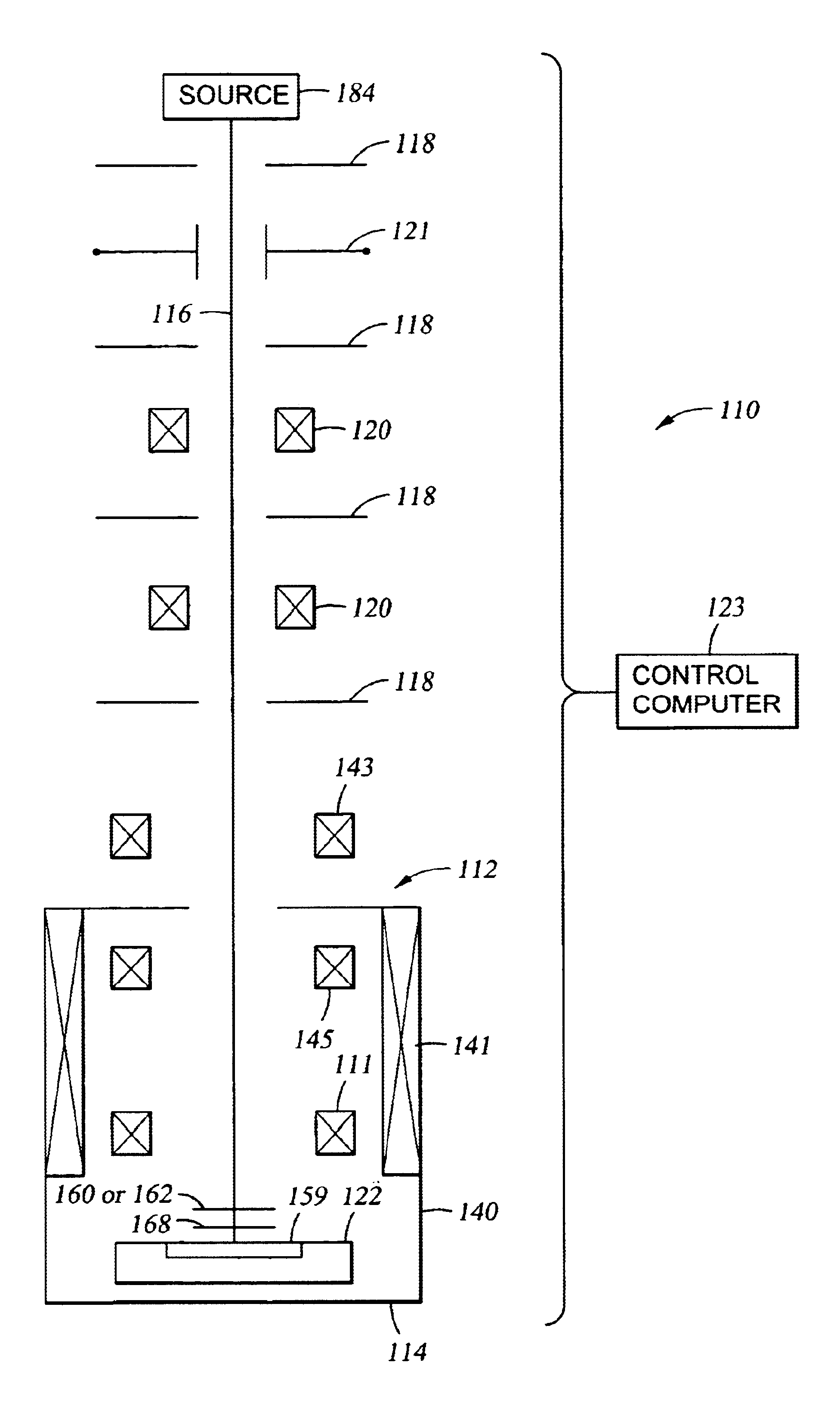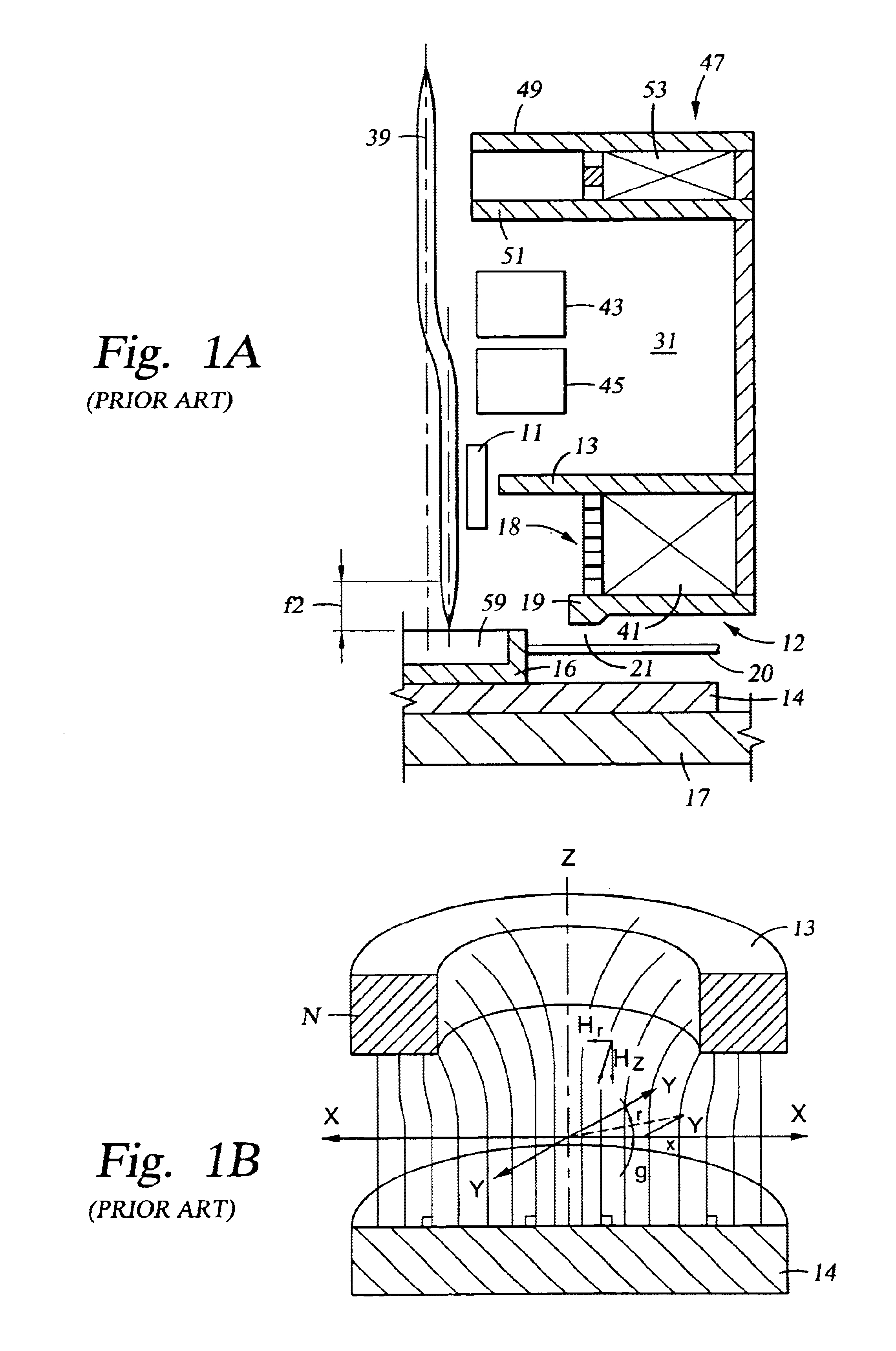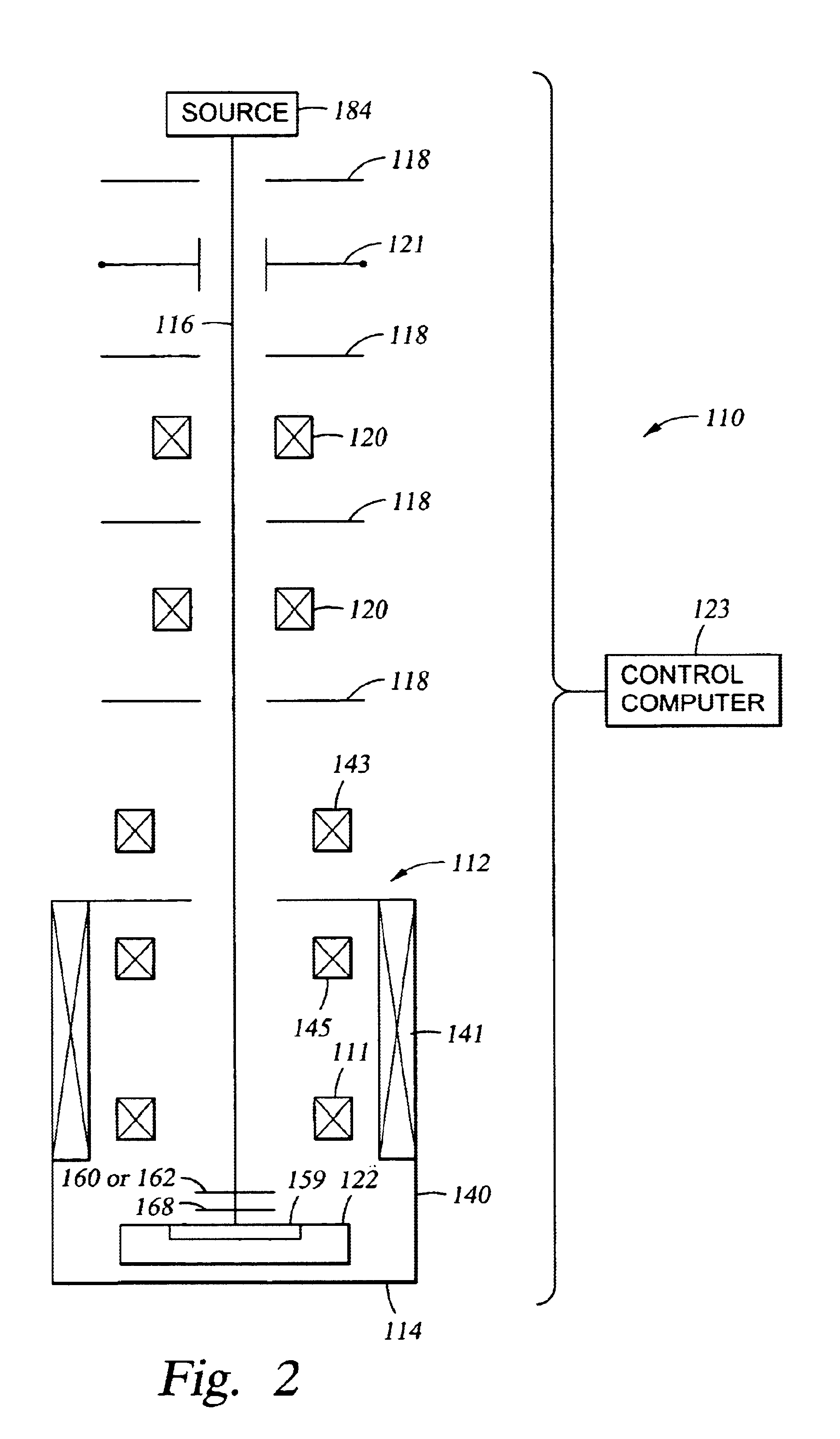Immersion lens with magnetic shield for charged particle beam system
a technology of charged particle beam and lens, applied in the field of immersion lenses, can solve the problems of system cost increase, and electron beam placement error, and achieve the effect of improving system cost and reducing system cos
- Summary
- Abstract
- Description
- Claims
- Application Information
AI Technical Summary
Benefits of technology
Problems solved by technology
Method used
Image
Examples
Embodiment Construction
In one embodiment, an otherwise conventional charged particle beam lithography system 110 (shown in a side view in FIG. 2) includes a magnetic field shield such as a magnetically "floating" disk 160 (shown by itself in perspective view in FIG. 3B) or a magnetically "floating" cone 162 (shown by itself in perspective view in FIG. 4B). The magnetic field shield limits magnetic field 172 (FIG. 3D and FIG. 4D) generated by deflector coil 111 from radiating downstream from the magnetic field shield. The magnetic field shield does not affect magnetic field 170 (FIG. 3C and FIG. 4C) generated by excitation coil 141 because the magnetic field shield is mounted so its upper surface is parallel (or approximately parallel) to an equipotential magnetic surface 161 of magnetic field 170.
In one embodiment, lithography system 110 includes charged particle (e.g., electron) source 184, aperture plates 118, blanking deflector 121, focusing lenses 120, an immersion lens 112, stage 122, and control com...
PUM
| Property | Measurement | Unit |
|---|---|---|
| thickness | aaaaa | aaaaa |
| optical axis | aaaaa | aaaaa |
| magnetic field | aaaaa | aaaaa |
Abstract
Description
Claims
Application Information
 Login to View More
Login to View More - R&D
- Intellectual Property
- Life Sciences
- Materials
- Tech Scout
- Unparalleled Data Quality
- Higher Quality Content
- 60% Fewer Hallucinations
Browse by: Latest US Patents, China's latest patents, Technical Efficacy Thesaurus, Application Domain, Technology Topic, Popular Technical Reports.
© 2025 PatSnap. All rights reserved.Legal|Privacy policy|Modern Slavery Act Transparency Statement|Sitemap|About US| Contact US: help@patsnap.com



